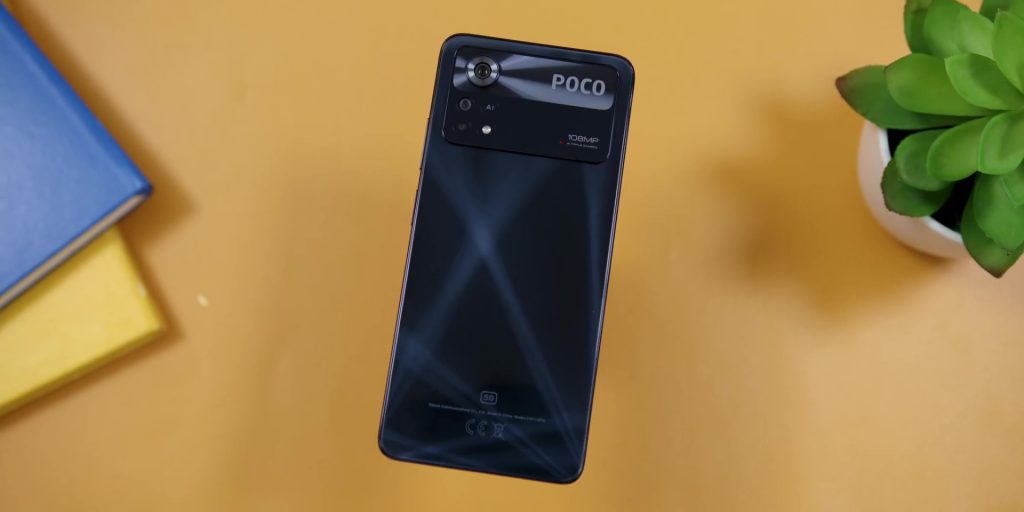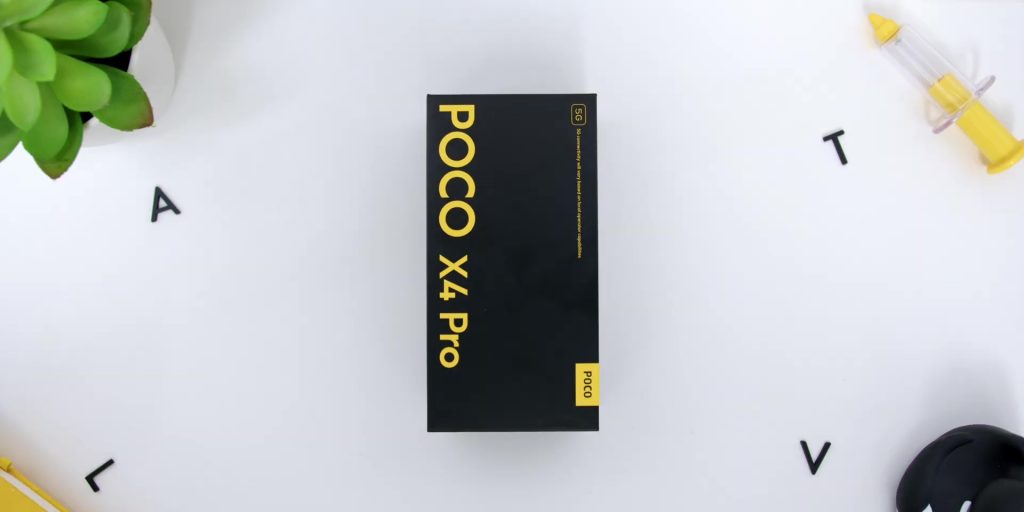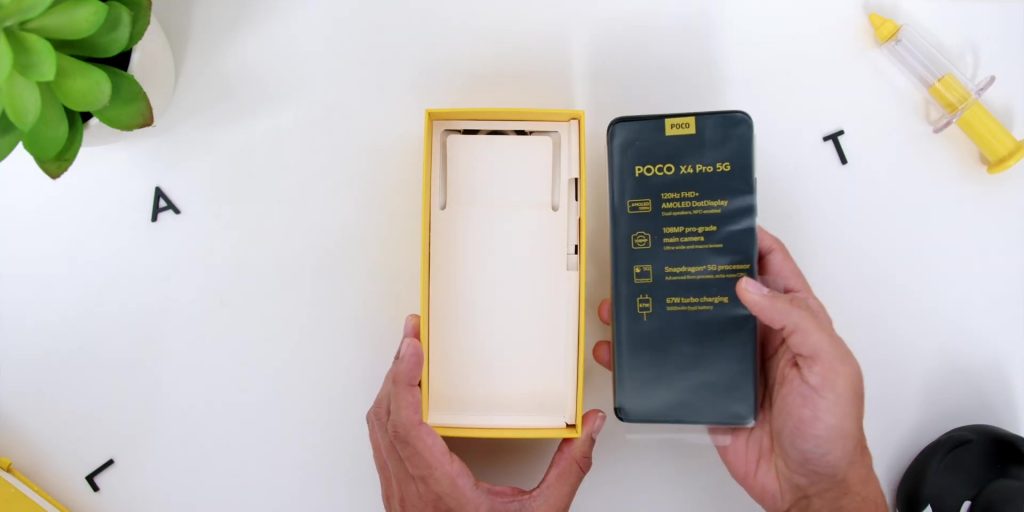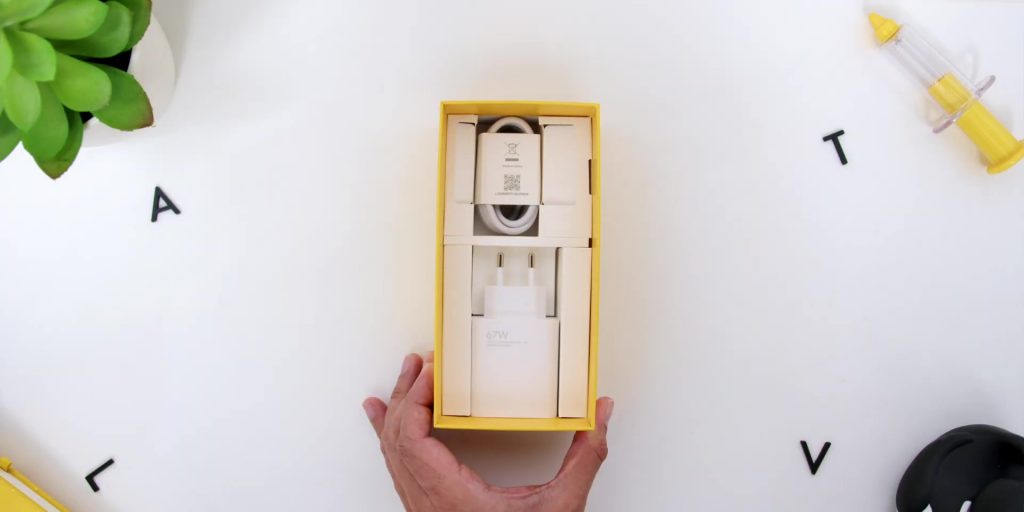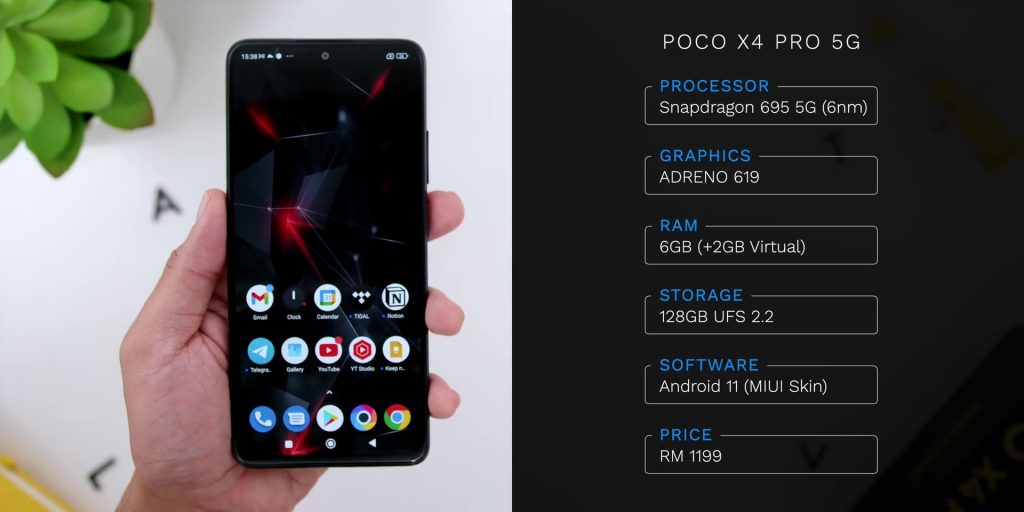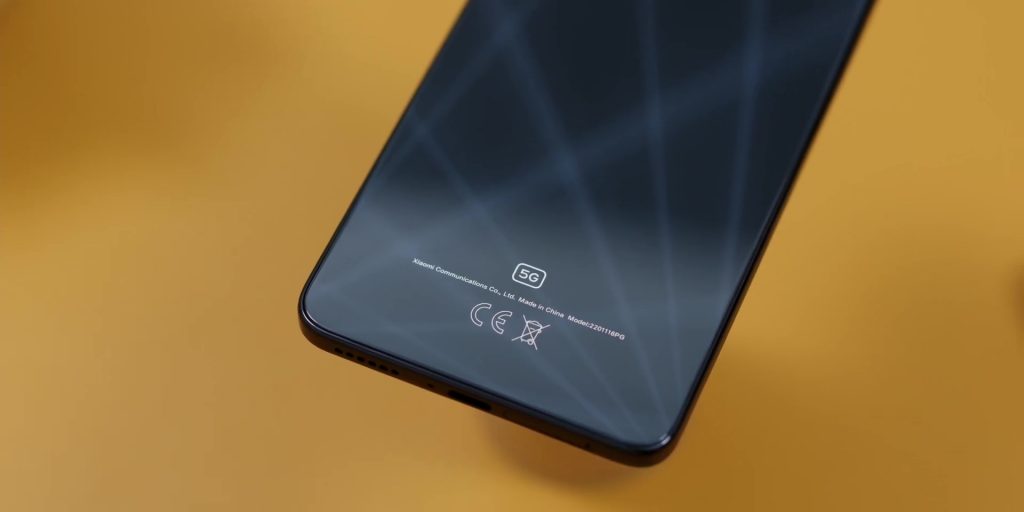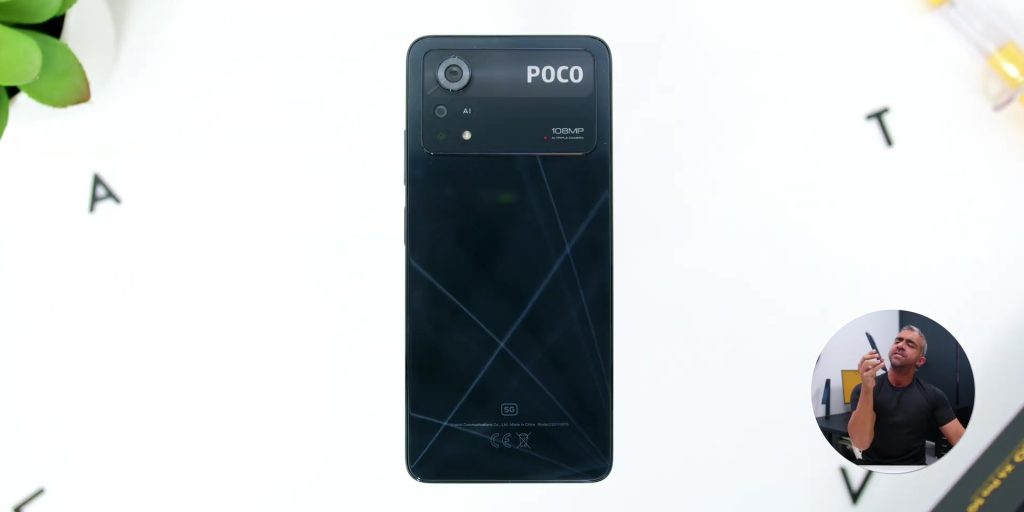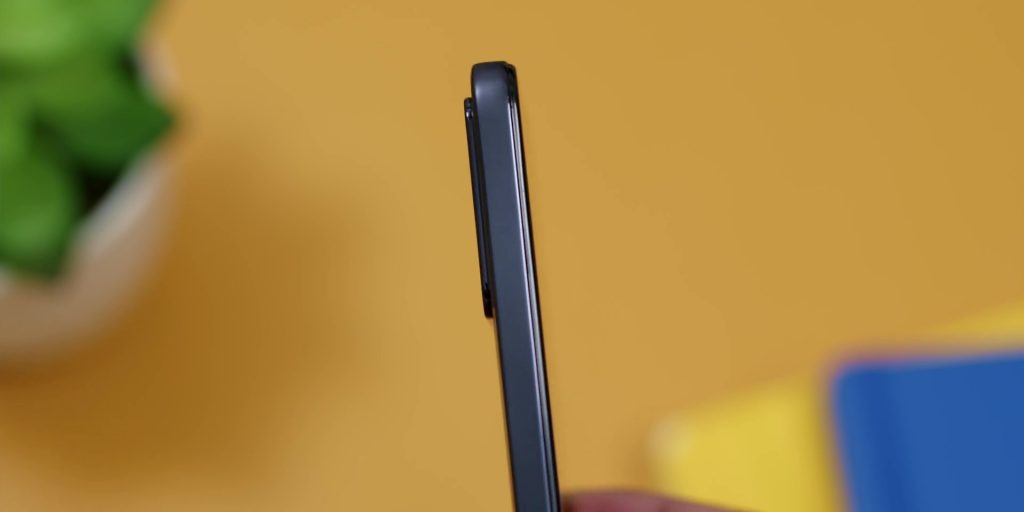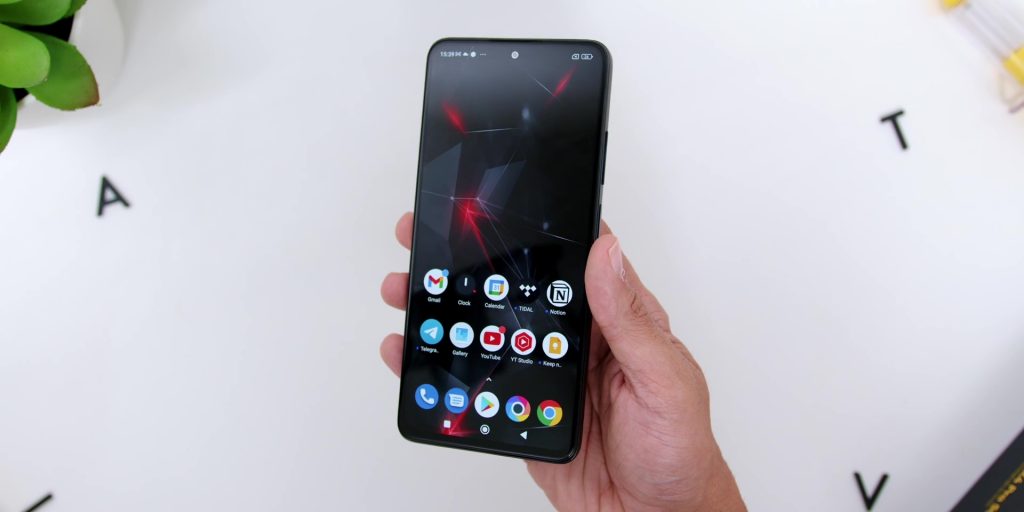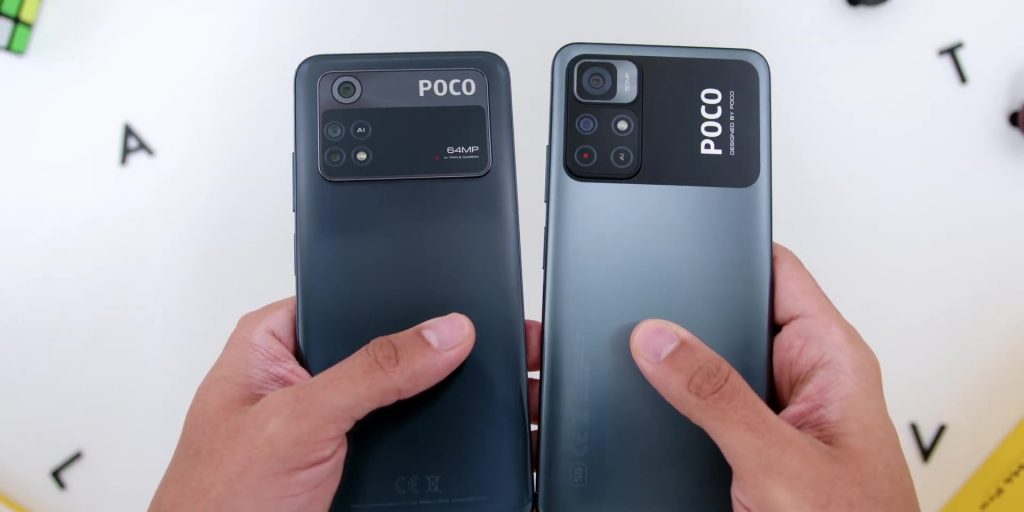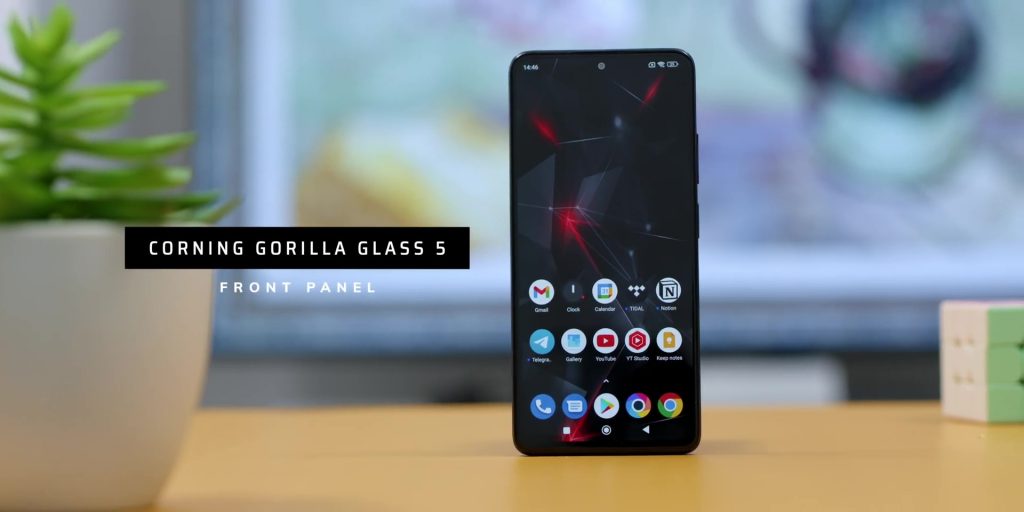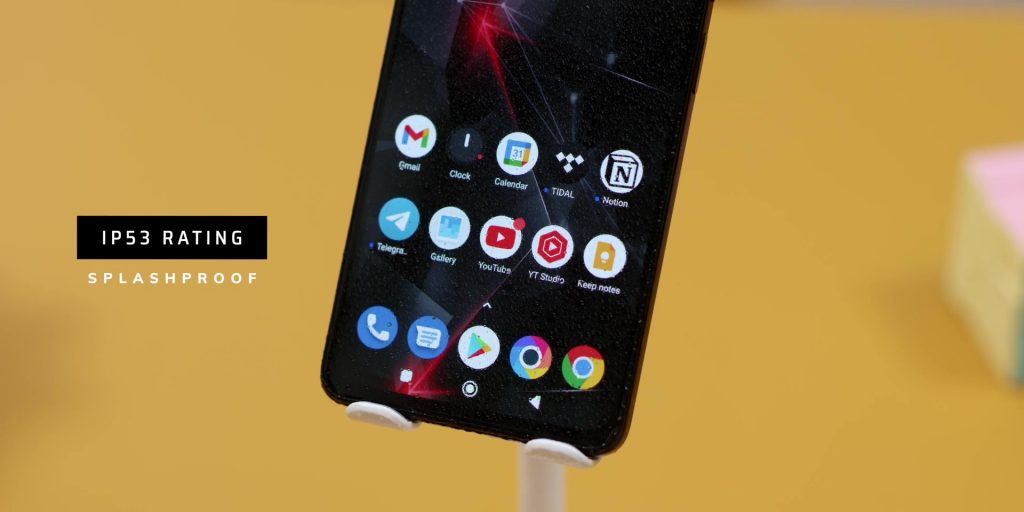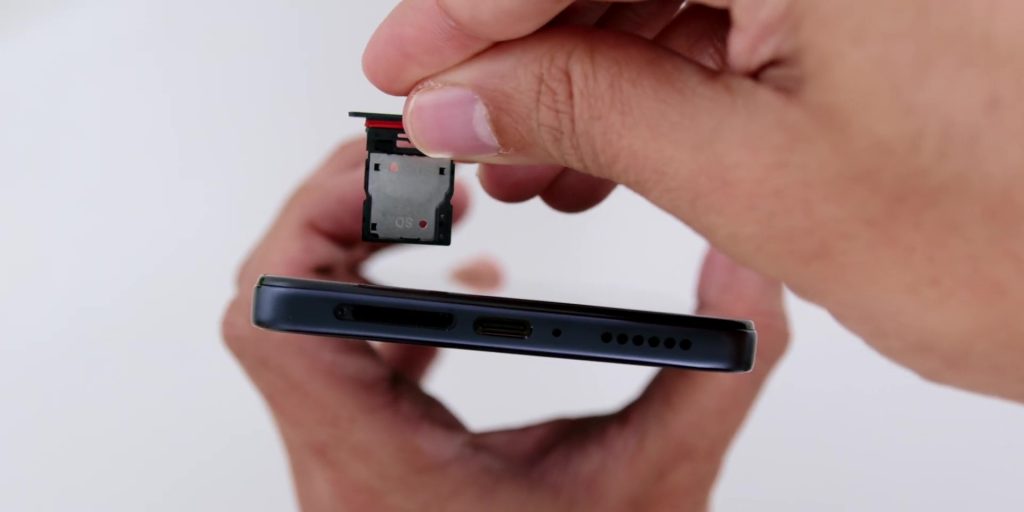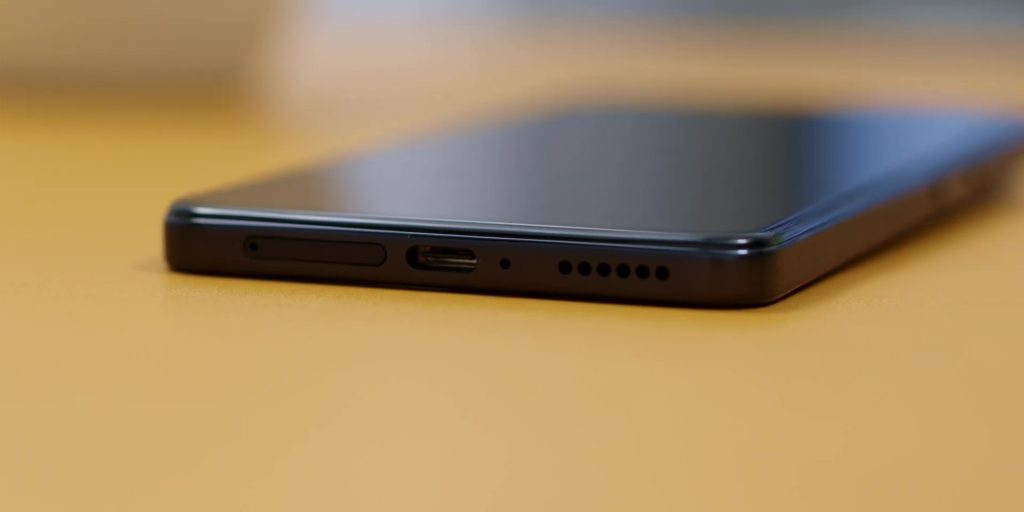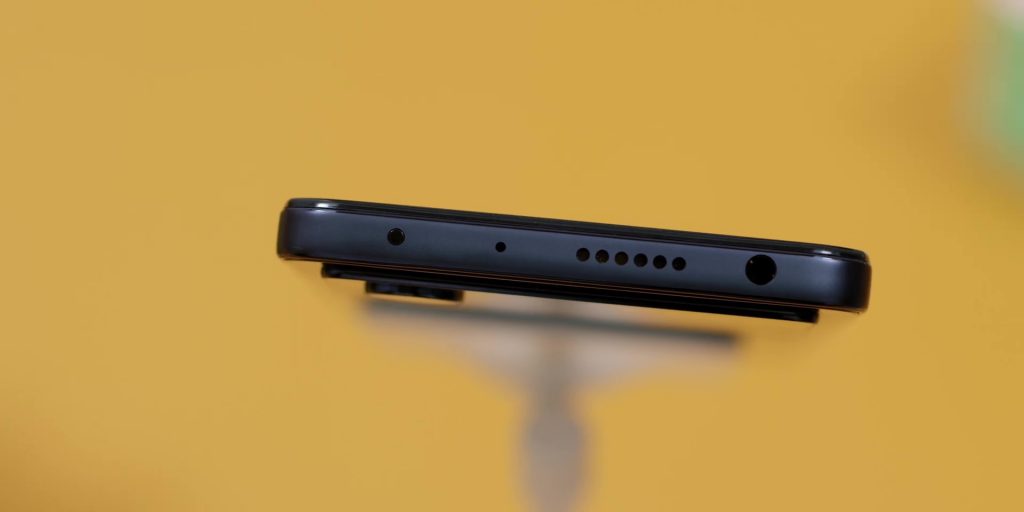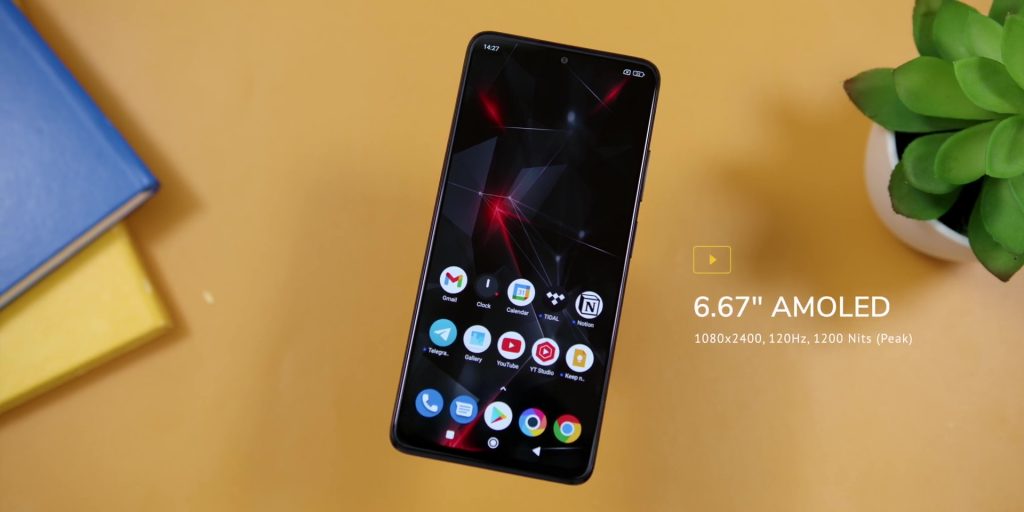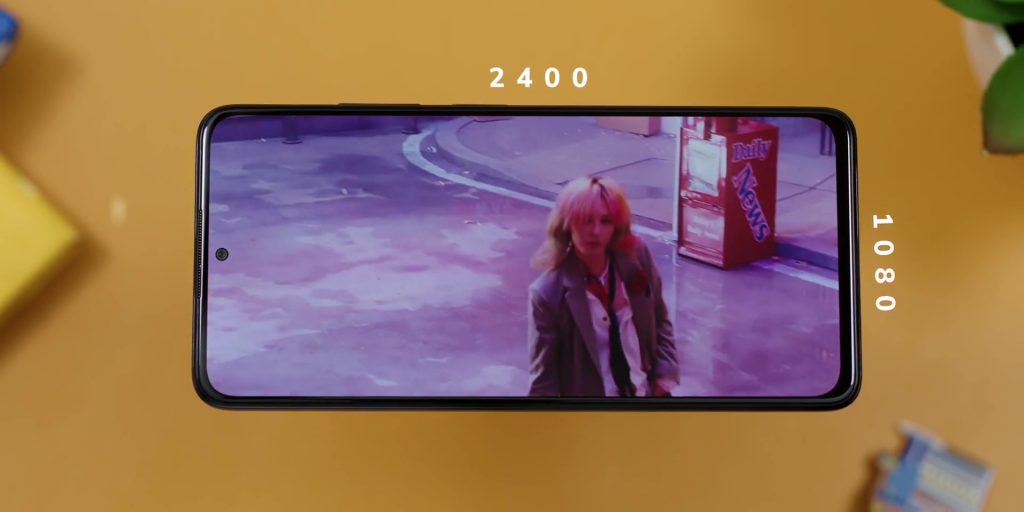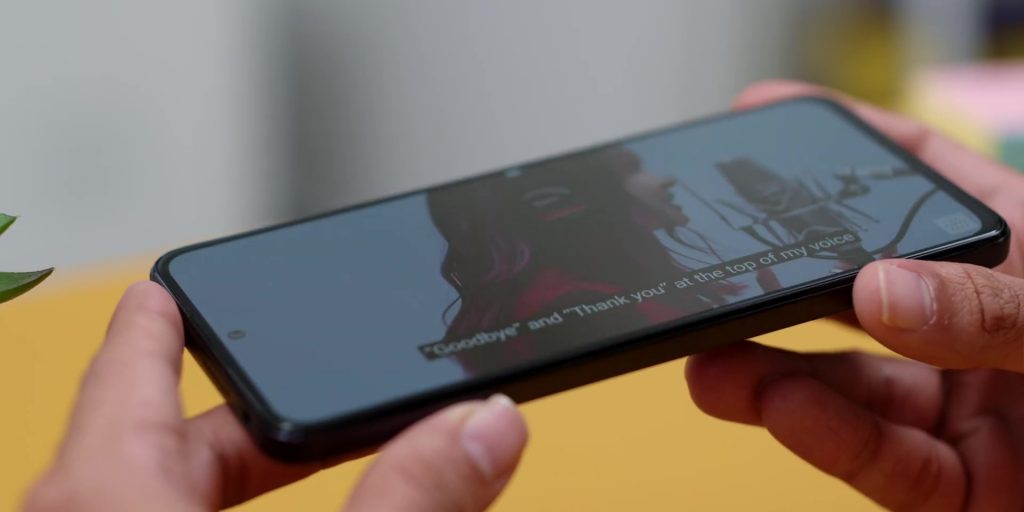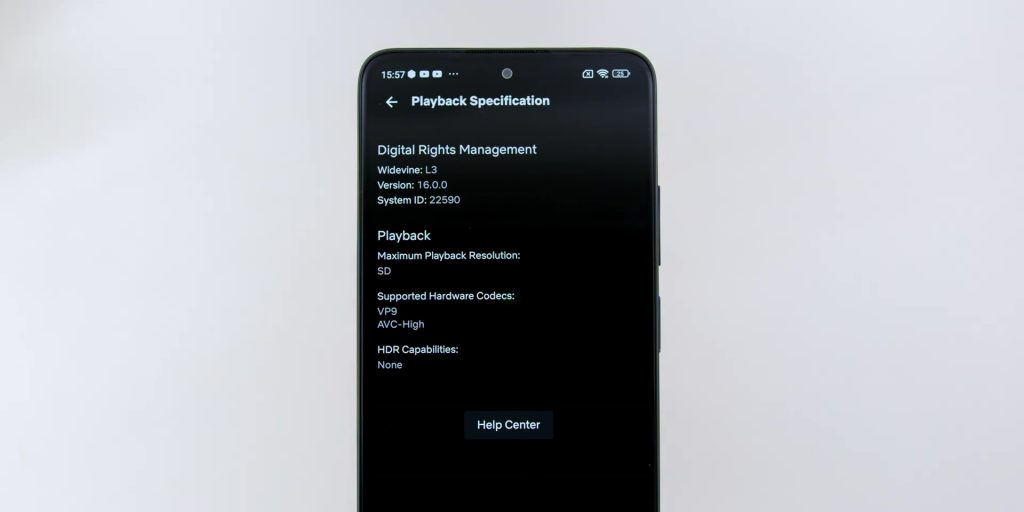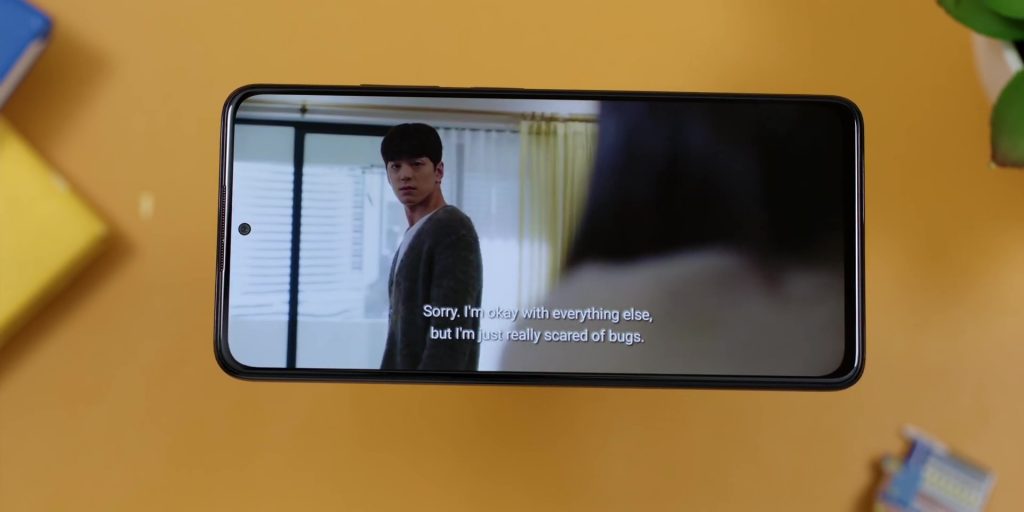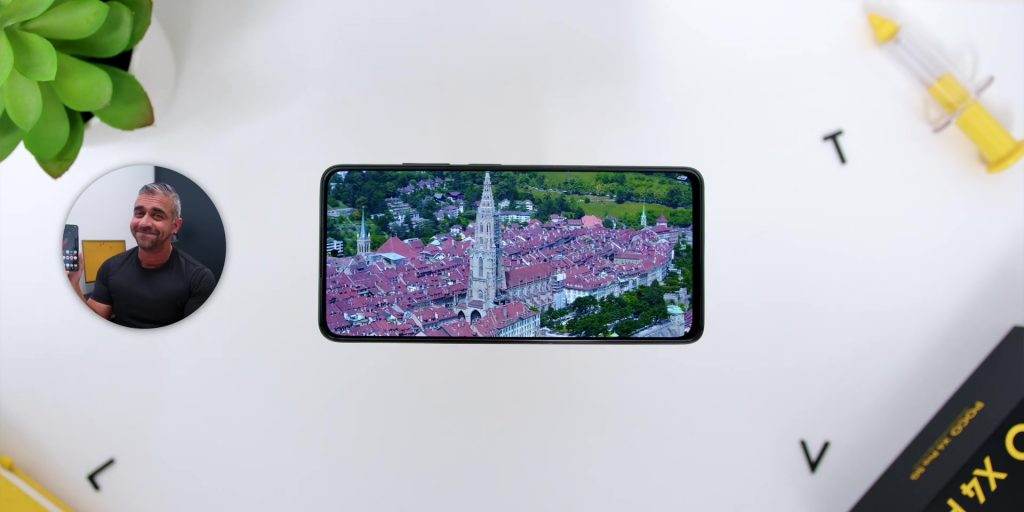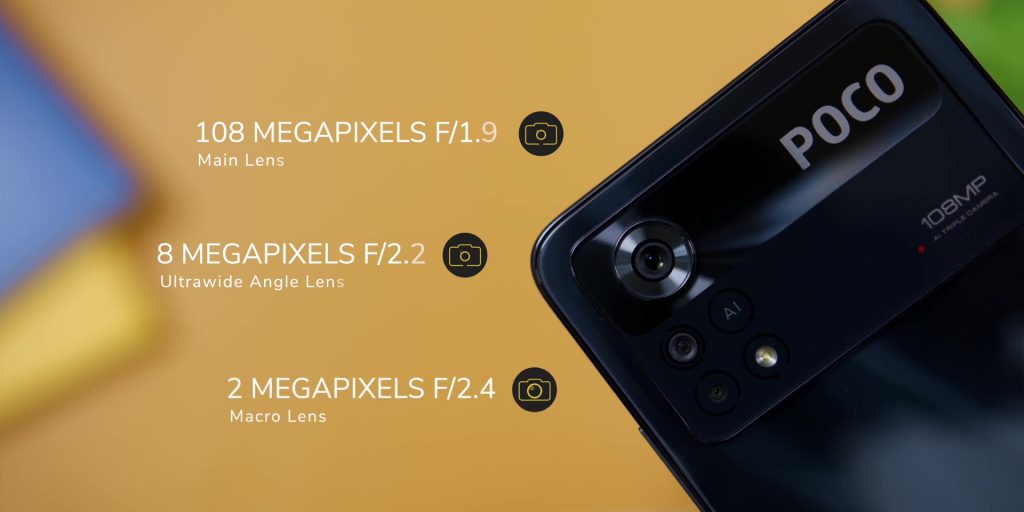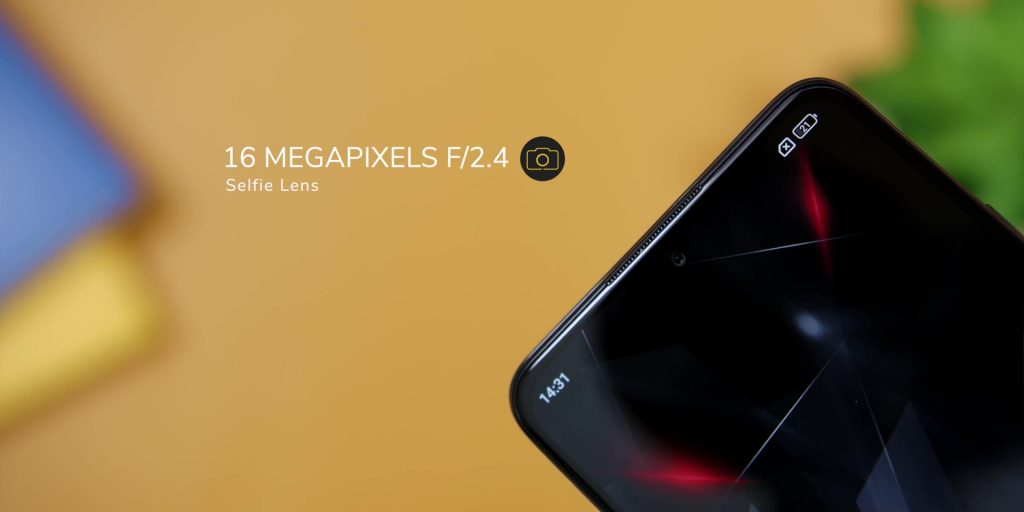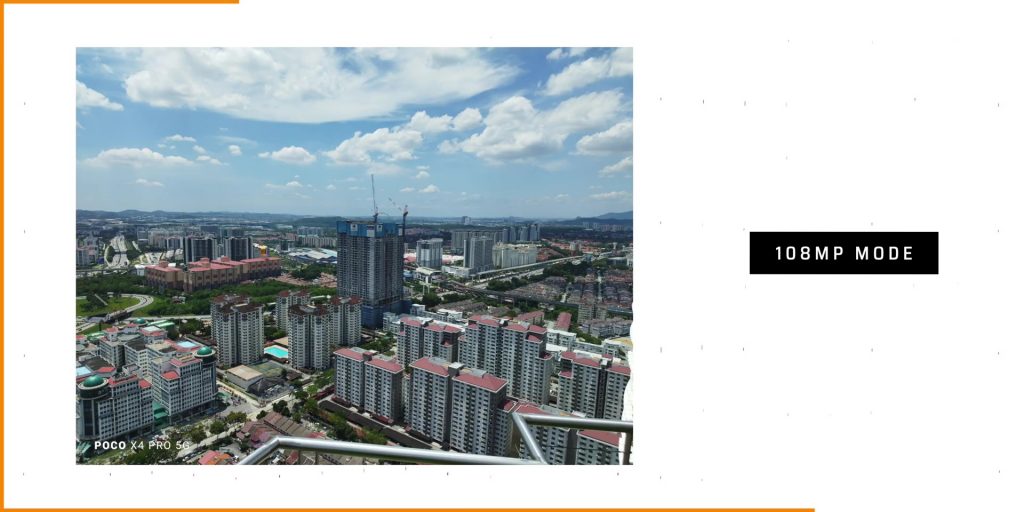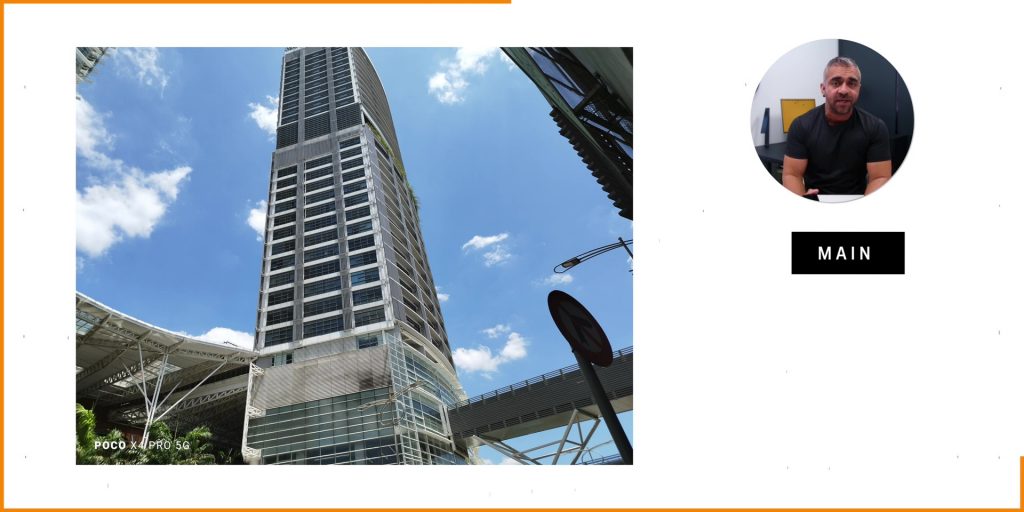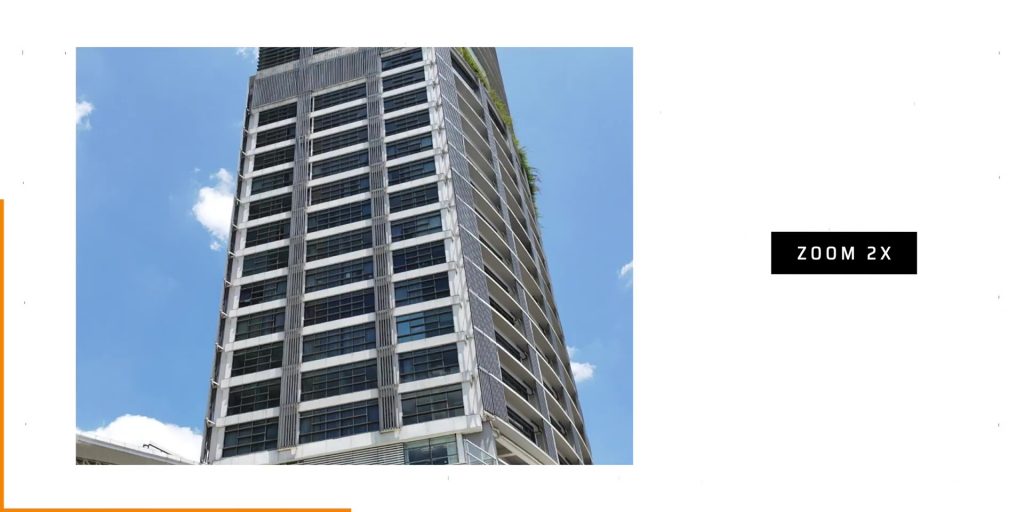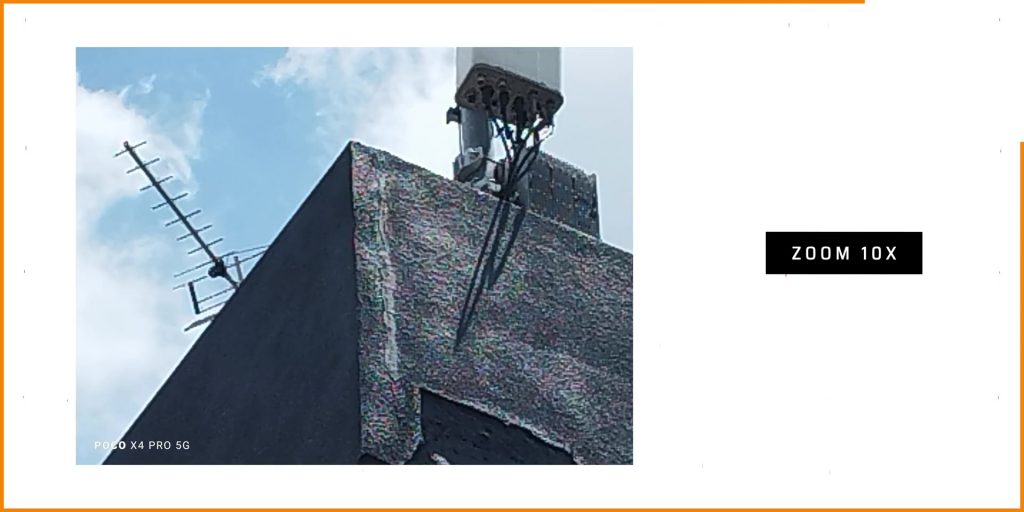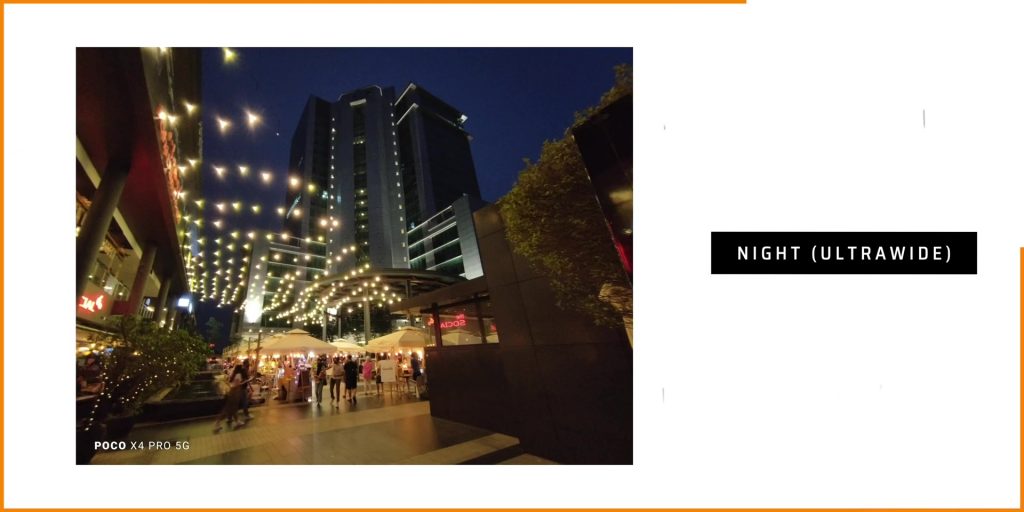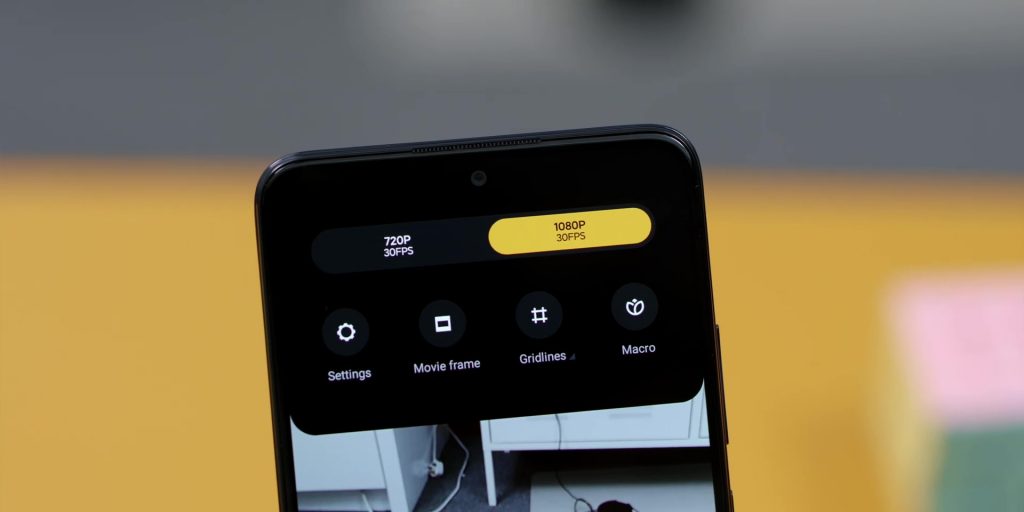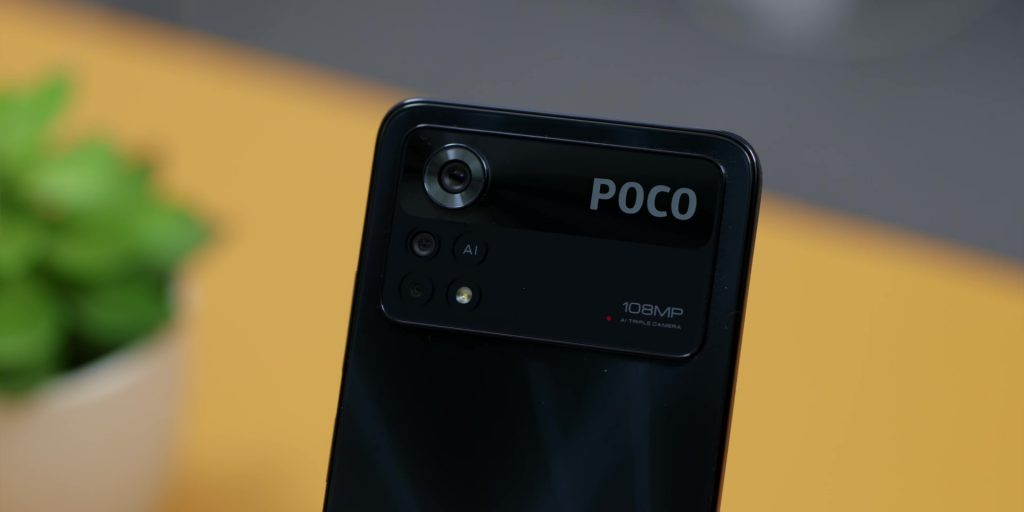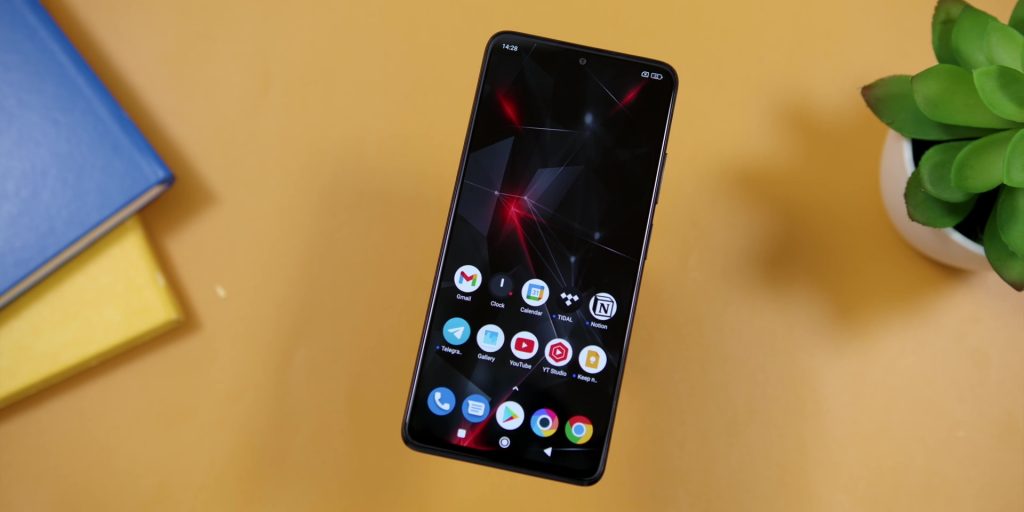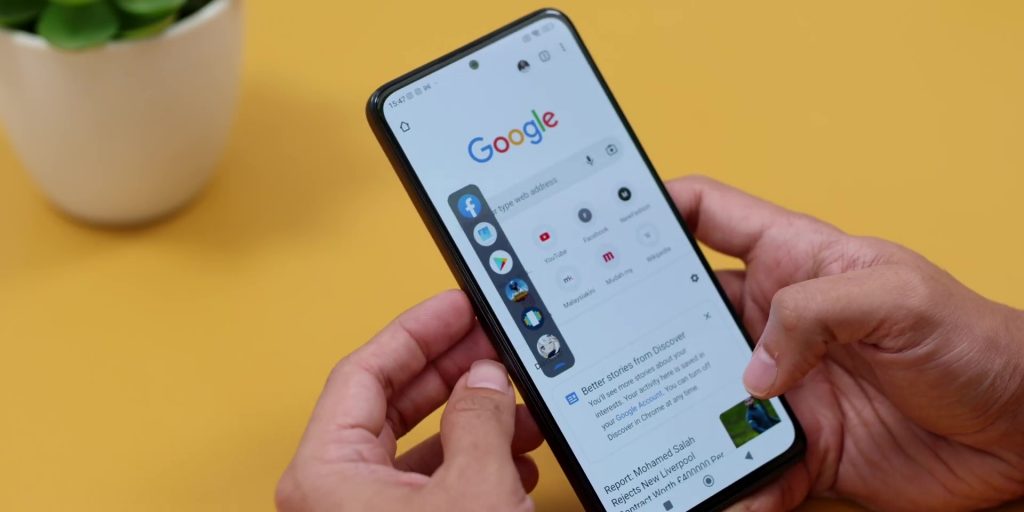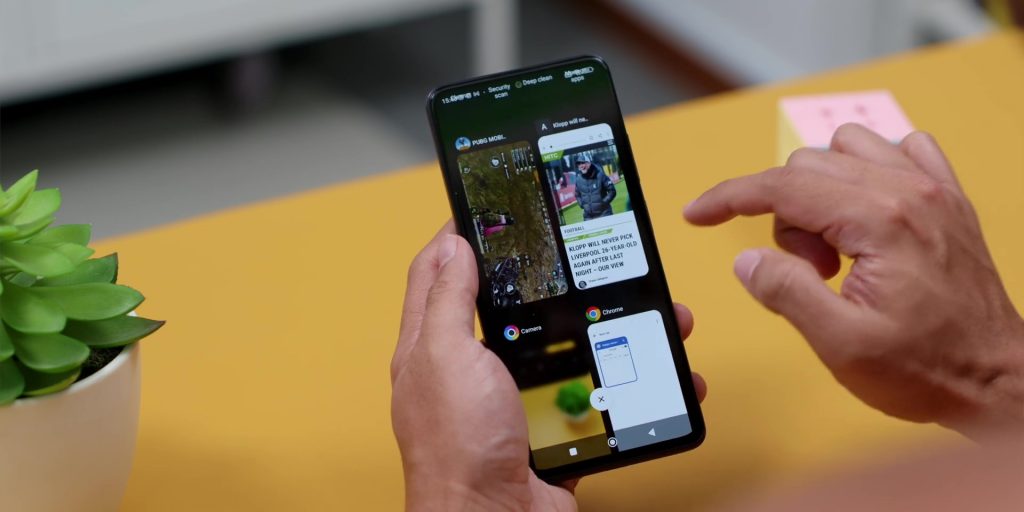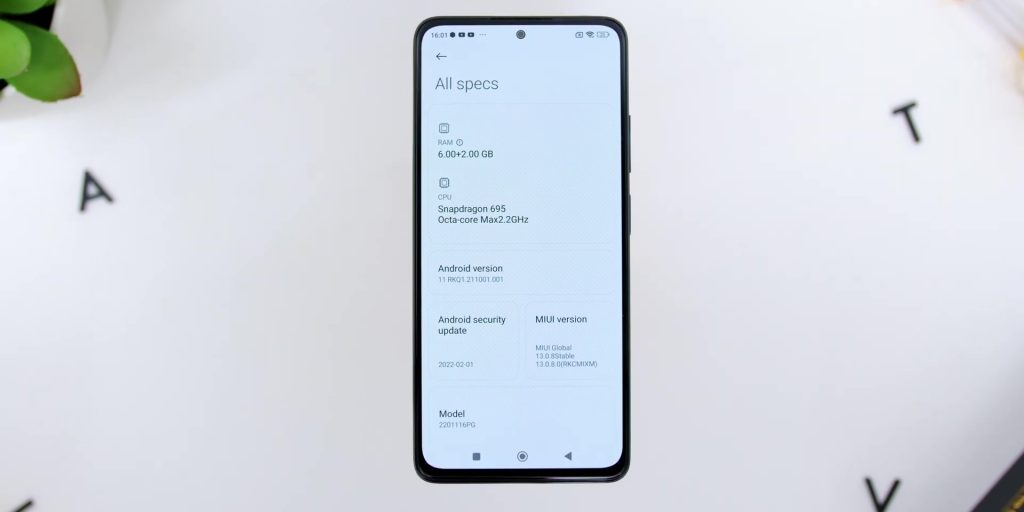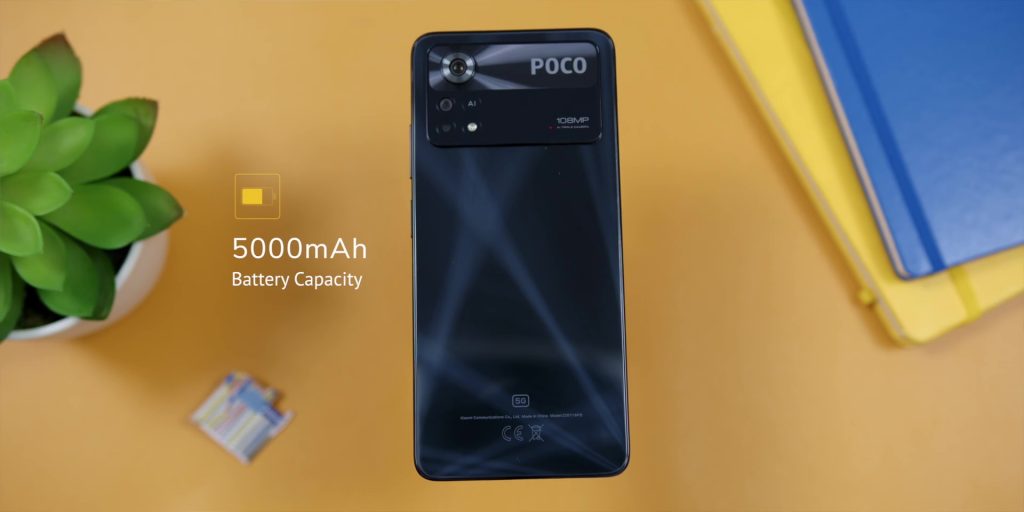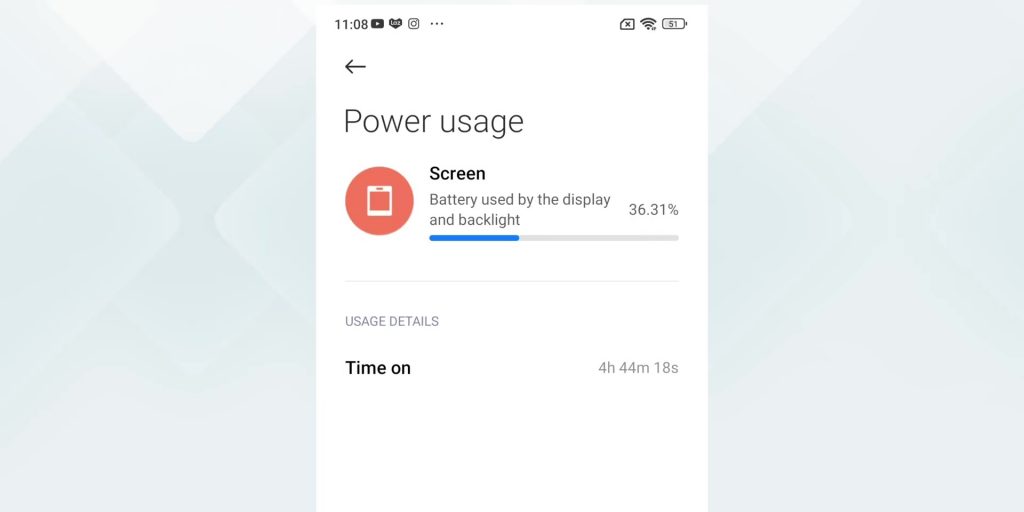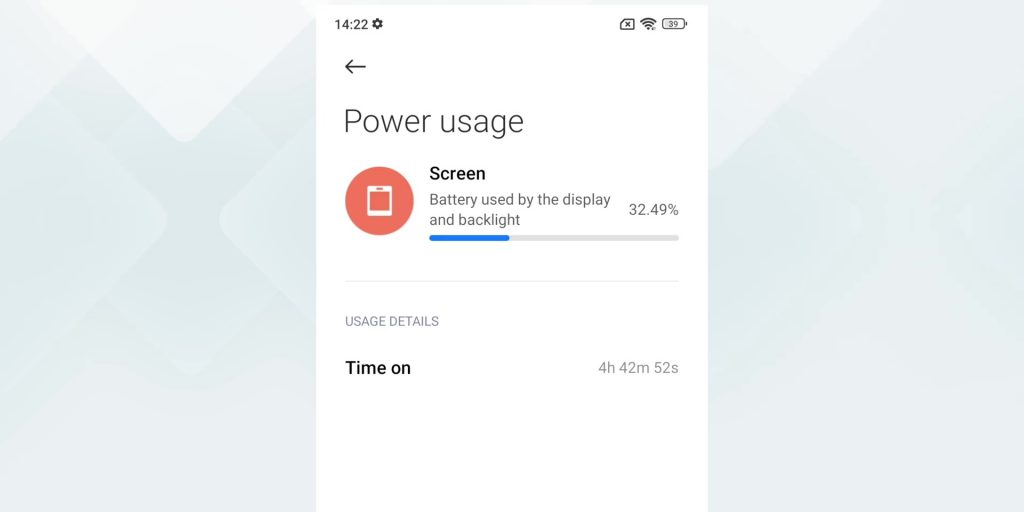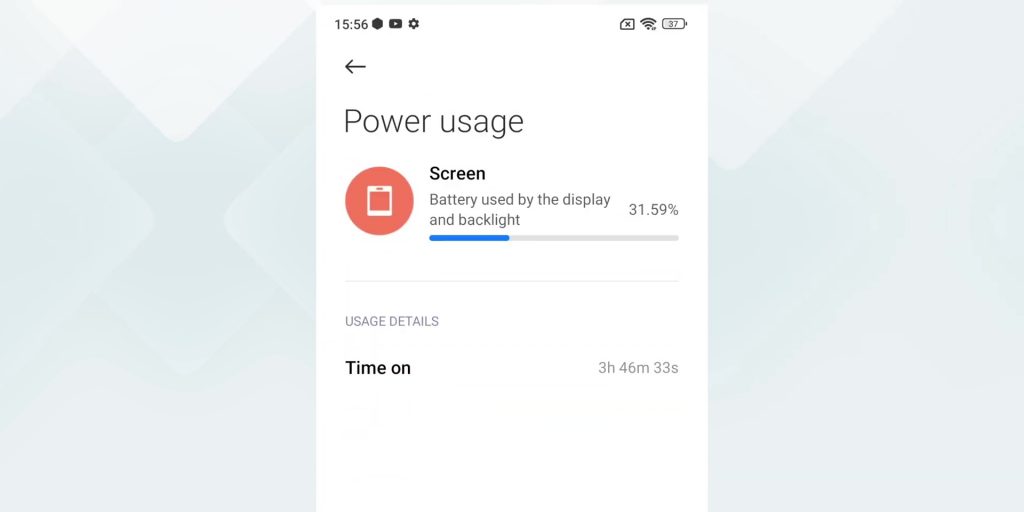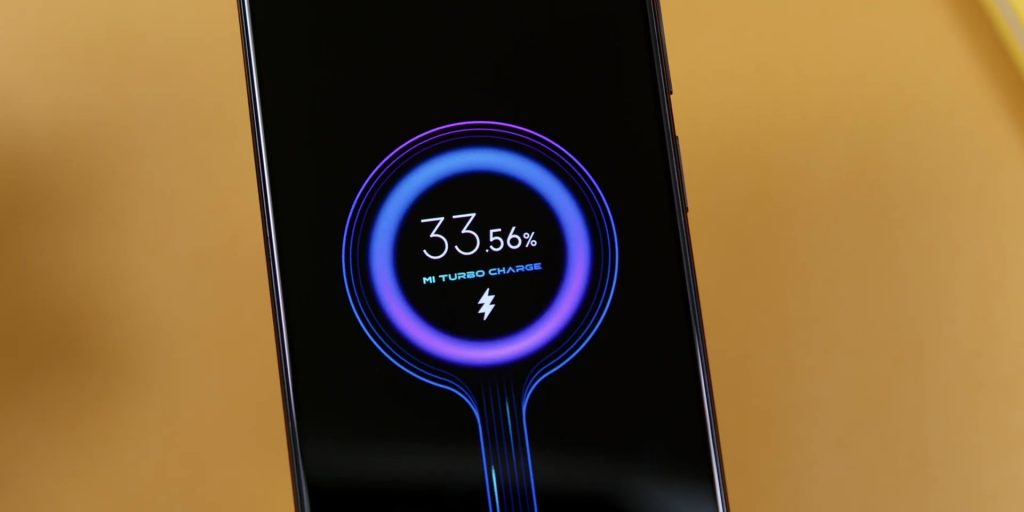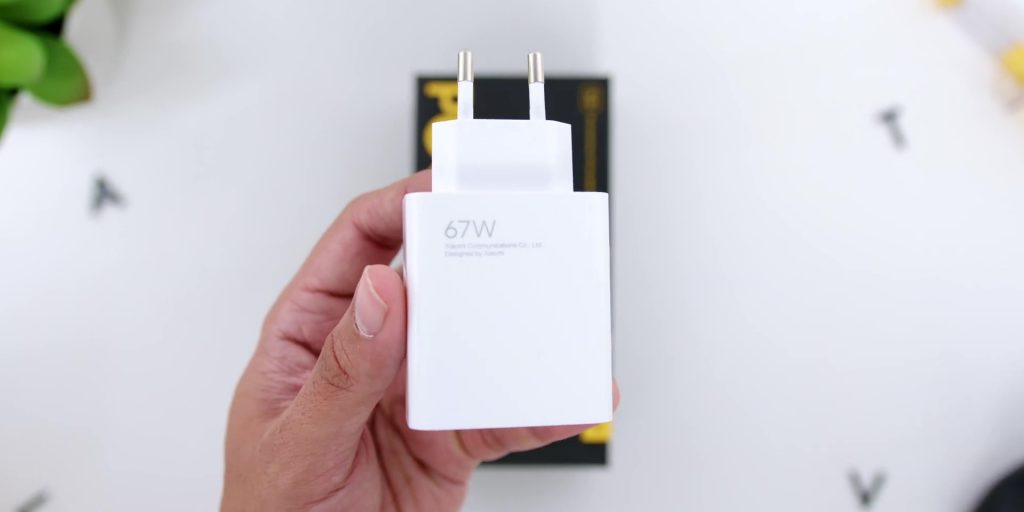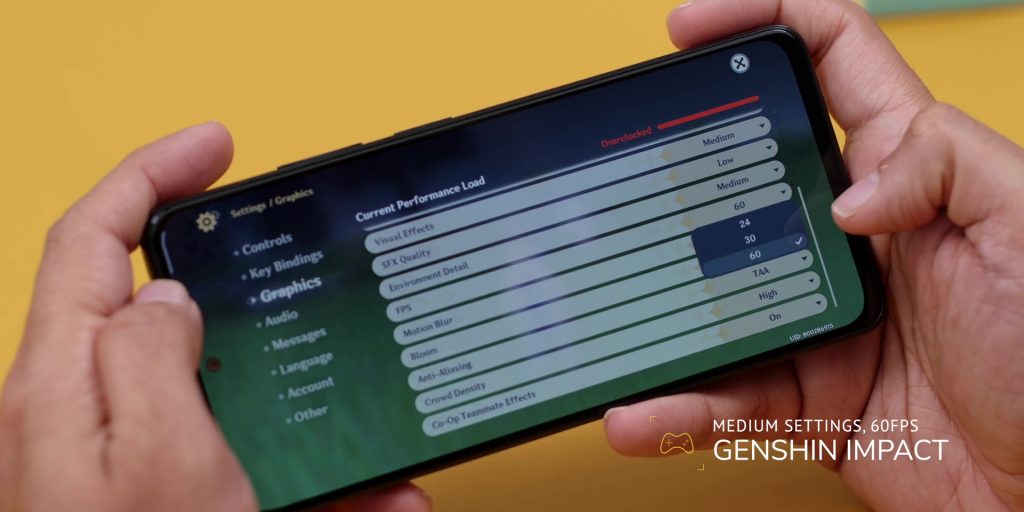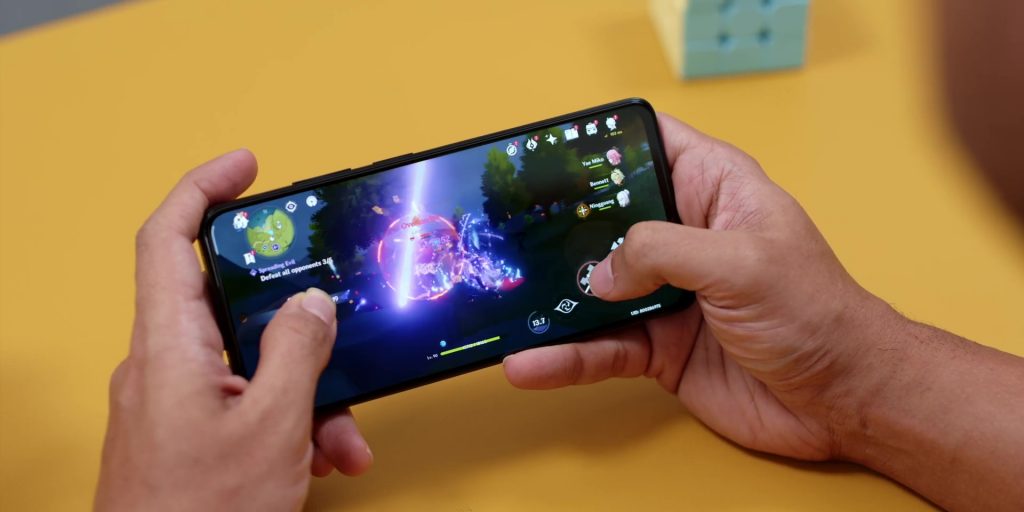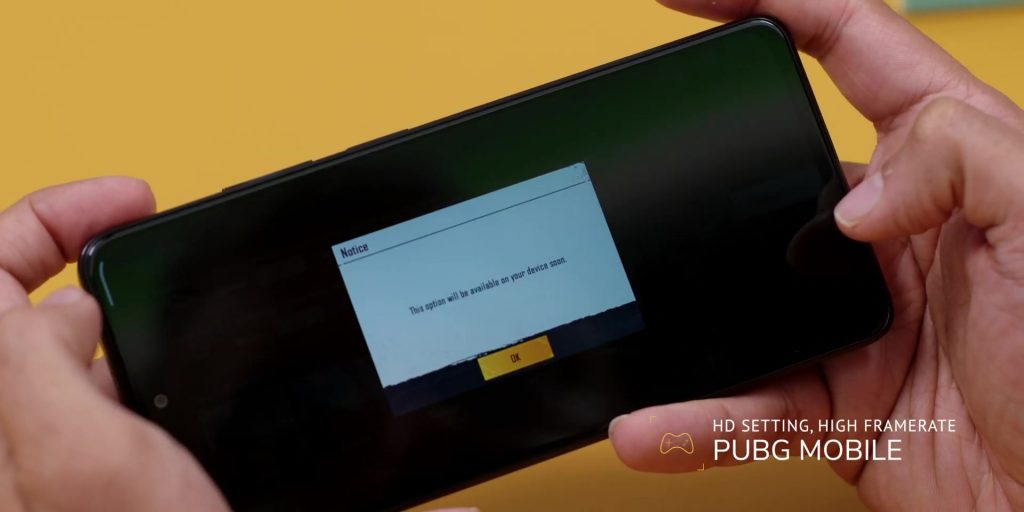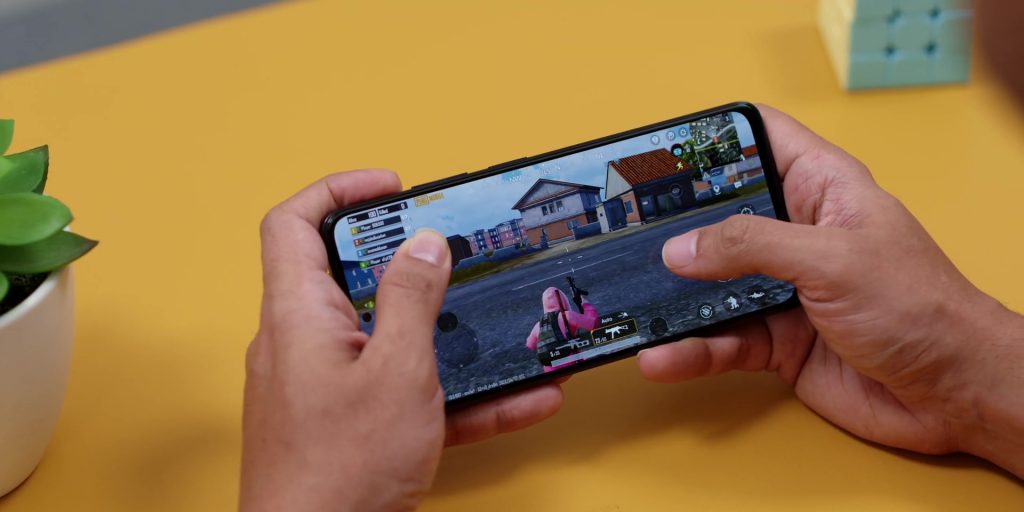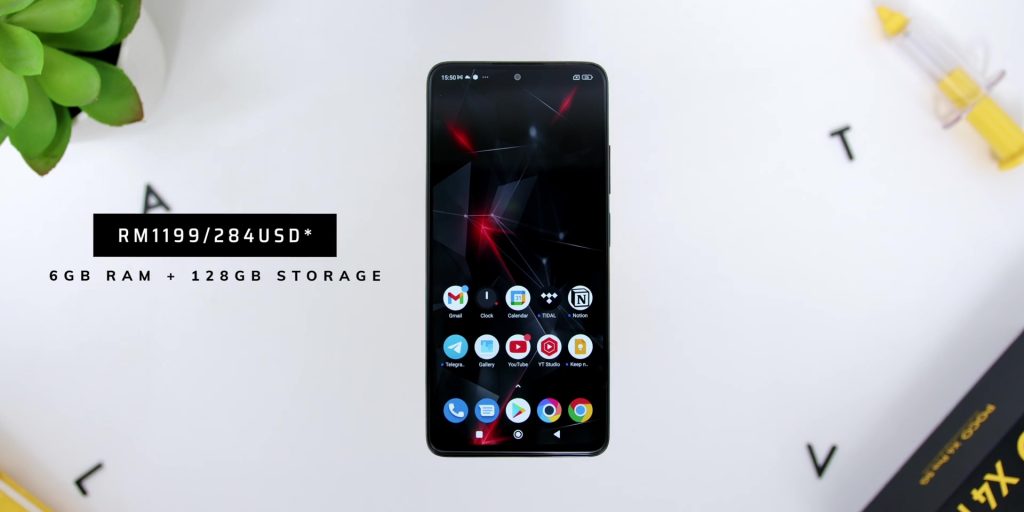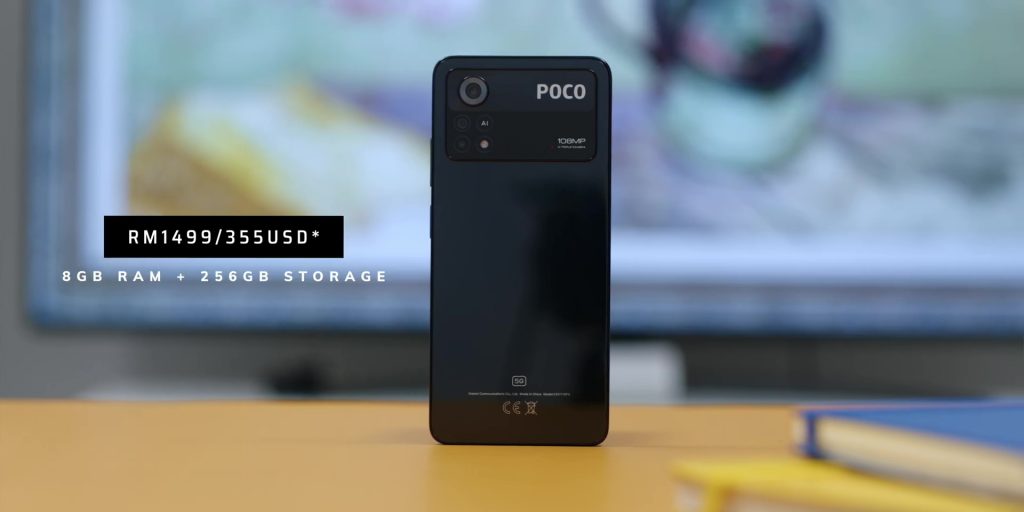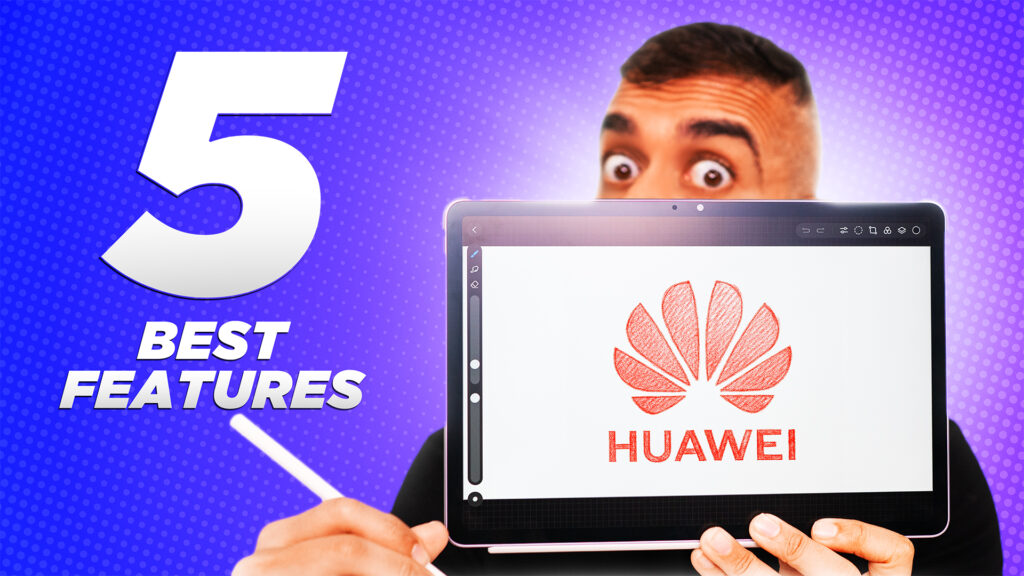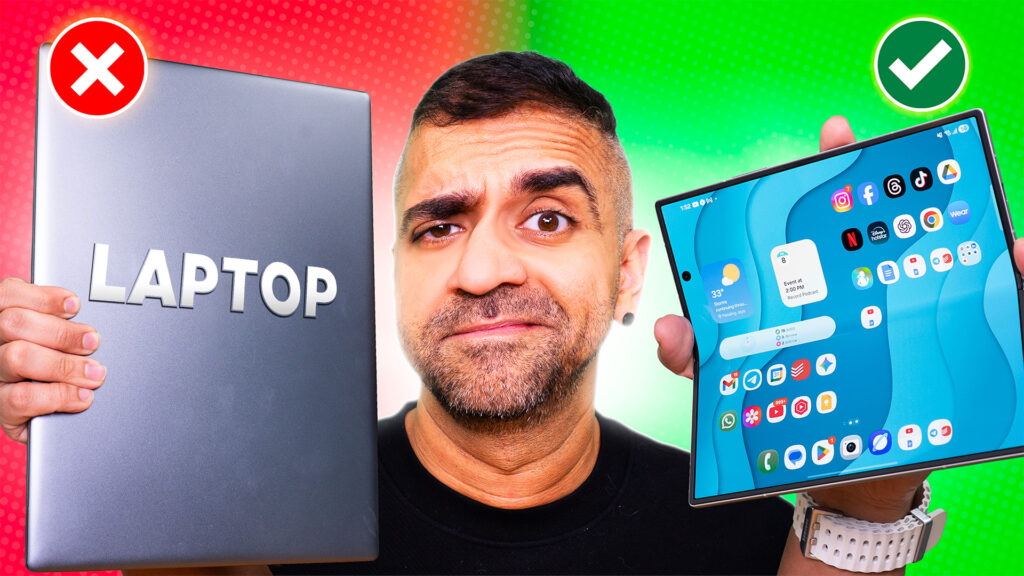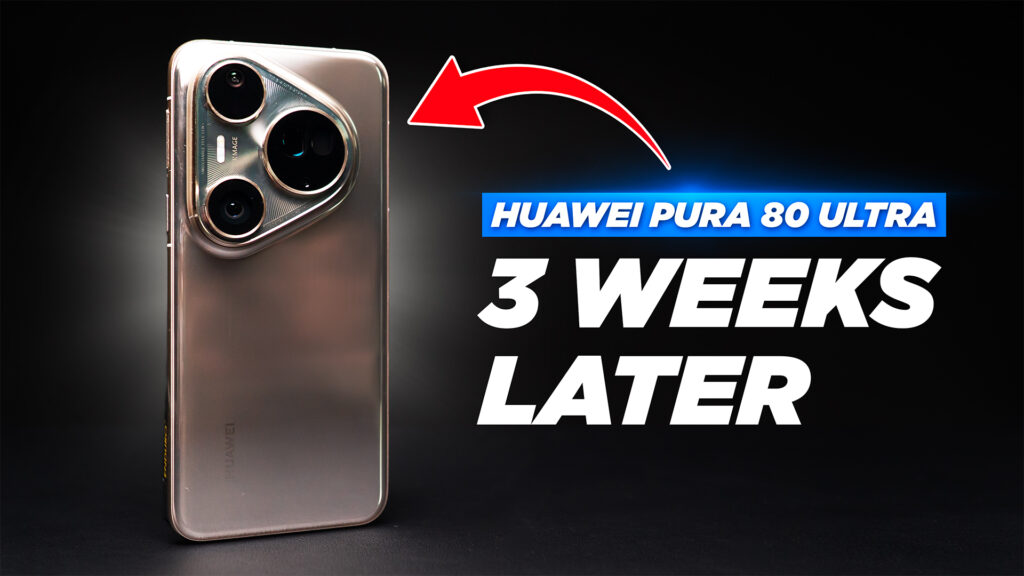Now, if you have been following this channel for a while, you may know that I have always been a fan of the F Series for the POCO phones since it has one of the best price-to-quality ratios, and usually, when it comes to the X series, I was always on the fence about the releases because there was always something that I didn’t like about the phone, but this POCO X4 Pro 5G MIGHT be something else.
Unboxing
Starting from the unboxing, the box comes in black, with the POCO X4 Pro text on the left and the POCO Logo down below towards the right.
Opening the box, there is the usual smaller yellow box, which has the SIM ejector pin on the outside, the warranty card, the quick start guide, and the clear phone case. Then, you will find a screen protector.
[easy-image-collage id=7377]
Next, there is the phone itself.
Underneath there is the USB-A to USB-C cable, and a massive 67-watt fast-charging brick.
Specs
Now here are the phone specs, which shows the exact variant that I am reviewing and the current price.
Build & Design
Next, let’s talk about the build and the design.
Now, while I am NOT a huge fan of a glossy finish smartphone because it attracts fingerprints and can be a bit slippery, I feel that there is an exception on this phone.
Firstly, this Laser Black variant that I have follows the other color variants of having very unique laser looking streaks when you shine it against the light, it will show that sort of laser lines and that is surely something that caught my eye and everyone else who have seen me using this phone daily.
And because the plastic frame had a matte finish, it did grip the phone well compared to other typical glossier phones, especially with the more squarish kind of frame.
While on paper, the phone is at 205 grams, which does seem like it was on the hefty side, but during my daily usage, I didn’t find that it was heavy at all.
What I found very interesting is that the camera arrays at the back followed the design language of the POCO M4 series instead of following the similar style of the camera arrays for the previous POCO X3’s circular design.
Then in terms of durability, the front glass has a Corning Gorilla Glass 5 protection and an official IP53 splash-proof protection as well.
Next, looking at the ports and buttons, looking below, other than the USB-C port, just next to it, there is the dual SIM with a hybrid card slot to switch the SIM 2 with a MicroSD card, which can support up to 1 Terabyte.
Then there is one of the two stereo speakers over there, where the other is on top, where it does get pretty loud, I may add.
Speaking of the top of the phone, you will also find the headphones jack and the IR Blaster.
Then on the right, there is the volume rocker and the power button that doubles up as a side fingerprint sensor, which unlocks really fast as expected, which was interesting because the phone does come with an AMOLED screen as they have decided not to have an in-display fingerprint sensor instead.
Display
Now speaking of the display, it comes with a 6.67-inch AMOLED DotDisplay, which is a spec bump compared to the previous generation screens, it has a high refresh rate of up to 120 hertz, and it has an FHD+ resolution of 1080 x 2400 pixels.
The screen goes up to a peak brightness of 1200 nits which was nice to know, especially for a phone within this price range, so I had absolutely no problems using this phone in brightly lit areas or even in bright daylight as well.
Viewing angles weren’t the best, and playback on Netflix was at Widevine L3, and playback was up to SD instead of FHD. So here is where I believe it could be a software limitation since the screen does have an FHD+ resolution.
But still, watching videos on the phone was excellent, with nice color accuracy but not as sharp as I would like on Netflix. Still, it was perfect when watching videos on YouTube, supporting its highest resolution.
In terms of the speaker’s performance when watching videos, while the speakers can get pretty loud but I would say that the vocal clarity was just decent, where it sounded better on the mids.
And the high refresh rate was a nice touch when using the phone as a daily smartphone for multitasking and overall app experiences due to the 360 Hertz touch sampling rate but keep in mind that this high refresh rate is not adaptive so it won’t really help when it comes to the overall battery performance. I’ll share more about the battery later.
Cameras
Next, looking at the camera’s performance, as for the specs:
- the main lens is a massive 108-megapixel f 1.9 aperture lens
- an 8-megapixel, f 2.2 ultrawide lens
- and a 2-megapixel f 2.4 macro camera
Then the front camera is a 16-megapixel f 2.4 aperture lens
Now just so y’all know that in these images, I turned off the AI mode in the camera app, as it seems to boost the Saturation too much when it’s on.
108-Megapixel Mode
Starting from the 108-megapixel mode, the dynamic range, colors and details were quite flawless, even when you zoomed in close.
Ultrawide Lens
And while the dynamic range, colors, and ultrawide focal length were excellent as well, but if you really pixel peep, you will find there is a slight softness on the edges of the images.
Main Lens
Then because the Main lens has that huge 108-megapixel sensor, I absolutely loved all the images coming out of this main lens, where it was sharp all around and had very great quality as well.
While the 2x digital zoom was still great, but you will see the image falling apart on the maximum 10x digital zoom.
Portrait Mode
As for the rear portrait mode, when it comes to human subjects, it was extremely great, with fantastic subject to background blur and no overexposing in the shots, but it will be a hit or miss when taking portrait mode shots for subjects instead.
Macro
Now while I have seen many POCO and even Xiaomi phones doing an excellent job at their Macro Mode photos, I wouldn’t say it was the same over here, where it wasn’t easy to nail focus and get the shot, and the overall images turned out quite soft.
Night Mode
As for the night mode, the Ultrawide lens doesn’t have the dedicated Night Mode capabilities, so you only have the main lenses in that mode. So expect a slightly softer image on the ultrawide lenses where the main lenses had a great balance of the highlights and shadows as well.
Portrait Mode at night without activating the Night Mode was surprisingly very good on the skin tones and edge detection, which seems like a similar case to the daytime shots, which shows that this phone indeed was a really good rear portrait mode shot.
Selfie
Then the selfie images were really great as well, especially if the light is shining towards you but not really on a high exposed background, which was fine considering the phone’s price.
Selfie Portrait
And the Selfie Portrait Images were almost like it was from a flagship smartphone with great edge detection and skin tones as well.
Video Recording
As for video recording, here is where the phone’s biggest weakness is as the rear cameras go up to only 1080p 30 frames per second, and while the image quality was still OK, the image stabilization is what makes the whole footage not a great footage to use.
Now I did find something a bit peculiar as when I was recording and looking at the phone’s screen, it seemed like the stabilization was great, but when I playback the footage, it wasn’t as good, so keep that in mind.
And the same can be said for the front video recording as well, which also records at the exact resolution and frame rate.
Macro Video
And then, there is Macro video as well, that can only record up to only 720p, yeap, and not only the image was really shaky, but the quality of the video wasn’t great at all, and it had a tough time trying to focus, so for the life of me, I don’t get why this feature is even there.
–
One thing definitely worth mentioning is the fact that the phone’s screen dimming was extremely apparent, specifically when taking photos and videos during the day, where as soon as the phone detects that it’s getting hot, it will immediately dim the phone’s screen to a point where you can’t see the screen properly in bright daylight, while yes, I know that this is a safety precaution, but I thought of letting you all know.
So overall, I have to say that rear camera photos, especially the Portrait modes, are the best, but do let me know what you think of the camera’s performance.
Software
So the POCO X4 Pro 5G ships with Android 11, yeap, not 12, and with MIUI version 13.0.8.0. So here we go again with those decimals.
Now, I mentioned many times that I was hoping for a new design refresh. However, instead, we only got Side Bar and some performance updates which was still better than nothing I guess, and ultimately that is what is the most crucial usability factor anyway.
And with this current update or even the previous update, I didn’t come to any point of time where the phone hung on me and had any issues even when I opened up several apps at the same time.
Now this Snapdragon 695 chipset with my variant of 6 gigabytes of RAM with the additional 2 gigabytes of virtual RAM, was way enough to keep the phone up and running during my daily heavy tasks and multitasking as well; and also worth mentioning is that the haptics of the phone was really good as well.
Battery
So the POCO X4 Pro 5G has 5000 milliamps of battery.
During my usage, battery drain was really at an optimal range of only going down to 83% when I had a screen on time of 1 hour and 4 minutes, so that was really nice to know.
But there is something very weird about the new battery software update, because I actually took a screenshot for several situations.
For Situation 1, it shows that when I was at 51%, I had 4 hours and 44 minutes of screen-on time. And then at 39% I had 4 hours and 42 minutes of screen-on time, which for some strange reason, it went down. And when I was at 37%, I was at 3 hours and 46 minutes of screen-on time.
So you will have to just trust me to say that I had a very good screen-on time on the phone daily when I was using the phone where I got an average of 1.5 days of battery life.
What’s sweet is that the phone supports 67-Watts Turbo Charging, as seen in the unboxing, the charger does come in the box, where it got me from 0 to 50% charge in about 20 minutes or so.
And, while the phone does come with a glass back, as mentioned, the phone does not have wireless charging, so keep that in mind.
Gaming
When it comes to gaming, just to see how far I can go with my gaming test, I immediately started off Genshin Impact, and it ran very well with Medium Settings at 60 FPS.
The gameplay was surprisingly running smoothly without any lag or micro jitters, it even barely felt hot at all even after 10 minutes of gameplay, which usually happens with other smartphones within this overall range.
However, there was a noticeable battery drain but the overall experience was amazing, considering the price of the phone.
And I tested out PUBG Mobile, where the maximum settings for the graphics were at HD and the frame rate was set to High. As expected, the gameplay ran smoothly without any stutter or any issues when it comes to lagging or even overheating issues at all.
But one thing I find it weird is why its limit is at HD graphics where usually it could go up to HDR or at least with an Ultra frame rate. So hopefully a software update could fix this.
Now, when it comes to the physicality of playing games on the phone, it felt really good because of the frame, and the phone was also not heavy where it felt comfortable without any hand strain, even during a longer gameplay up to 1.5 hours.
Conclusion
So, in conclusion, while there was a huge debate about how the POCO X4 Pro was very reminiscent or if it was “POCO’s version” of Redmi Note 11 Pro 5G since the specs are exactly the same. Well, I have to humbly disagree as I do feel that this POCO X4 Pro 5G is indeed a unique phone where firstly, it doesn’t look or even feels like a typical mid-range smartphone with the almost flagship-like design.
The image processing and the quality for the rear camera were great, gaming was really decent, battery life was quite exceptional, and overall the experience it gave me daily was once again very nice and unique indeed, and it currently comes with a price of RM 1199 for the 6 gigabytes RAM and the 128 gigabytes of storage version and RM1499 for the 8 gigabytes of RAM and 256 gigabytes of storage variant.
Now, speaking of POCO smartphones, do check out my 9th-month video review of the POCO F3 and the POCO M4 Pro 4G vs 5G variant.
Get the POCO X4 Pro 5G at the link below:-
https://invol.co/cla9b3o (Lazada)
https://invol.co/cla9b41 (Shopee)

